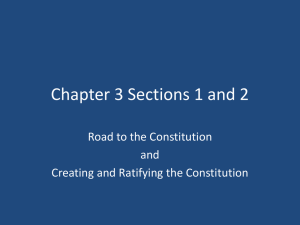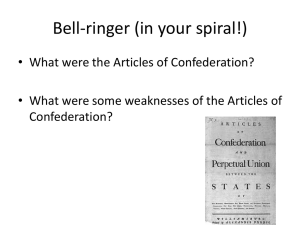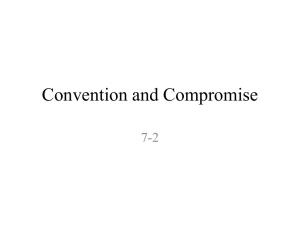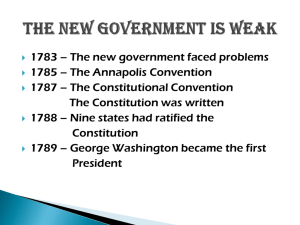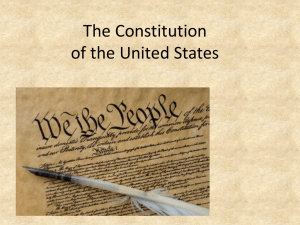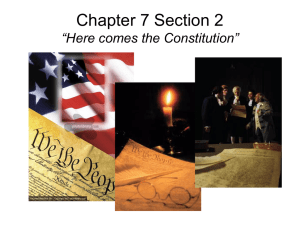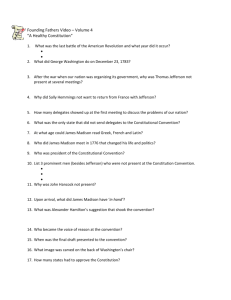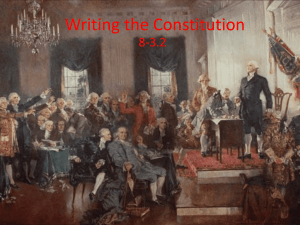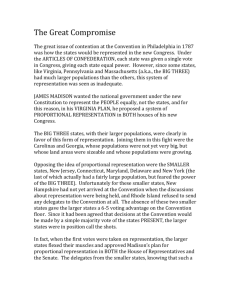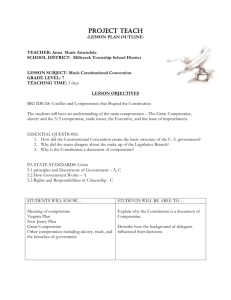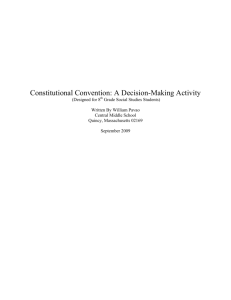Chapter 7.2 Reading
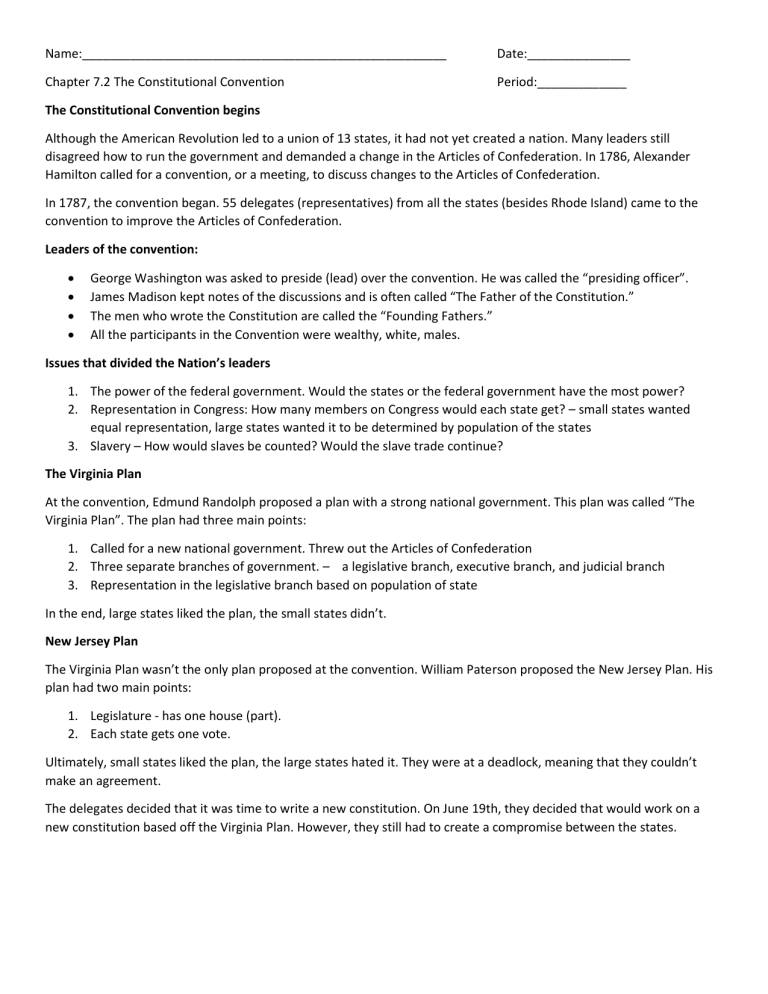
Name:_____________________________________________________
Chapter 7.2 The Constitutional Convention
Date:_______________
Period:_____________
The Constitutional Convention begins
Although the American Revolution led to a union of 13 states, it had not yet created a nation. Many leaders still disagreed how to run the government and demanded a change in the Articles of Confederation. In 1786, Alexander
Hamilton called for a convention, or a meeting, to discuss changes to the Articles of Confederation.
In 1787, the convention began. 55 delegates (representatives) from all the states (besides Rhode Island) came to the convention to improve the Articles of Confederation.
Leaders of the convention:
George Washington was asked to preside (lead) over the convention. He was called the “presiding officer”.
James Madison kept notes of the discussions and is often called “The Father of the Constitution.”
The men who wrote the Constitution are called the “Founding Fathers.”
All the participants in the Convention were wealthy, white, males.
Issues that divided the Nation’s leaders
1.
The power of the federal government. Would the states or the federal government have the most power?
2.
Representation in Congress: How many members on Congress would each state get? – small states wanted equal representation, large states wanted it to be determined by population of the states
3.
Slavery – How would slaves be counted? Would the slave trade continue?
The Virginia Plan
At the convention, Edmund Randolph proposed a plan with a strong national government. This plan was called “The
Virginia Plan”. The plan had three main points:
1.
Called for a new national government. Threw out the Articles of Confederation
2.
Three separate branches of government. – a legislative branch, executive branch, and judicial branch
3.
Representation in the legislative branch based on population of state
In the end, large states liked the plan, the small states didn’t.
New Jersey Plan
The Virginia Plan wasn’t the only plan proposed at the convention. William Paterson proposed the New Jersey Plan. His plan had two main points:
1.
Legislature - has one house (part).
2.
Each state gets one vote.
Ultimately, small states liked the plan, the large states hated it. They were at a deadlock, meaning that they couldn’t make an agreement.
The delegates decided that it was time to write a new constitution. On June 19th, they decided that would work on a new constitution based off the Virginia Plan. However, they still had to create a compromise between the states.
The Great Compromise
The Convention appointed a committee to settle the disagreement between the states. Roger Sherman of Connecticut suggested an agreement that would later be called the Great Compromise. This broke the deadlock between the states.
The compromise stated the following:
1.
Legislature would have two houses: House of Representatives and a Senate.
2.
The House would be based on the population of state.
As a result, the number of seats for each state would be based on the state’s population. Larger states would have more representation.
3.
The Senate would have two senators per each state.
Each state would have equal representation.
Slavery:
Unfortunately, the Southern states refused to approve the Constitution unless slavery continued. It was a terrible compromise to make, but the Northern states had no choice if they wanted a Constitution.
Ultimately, the delegates agreed on the 3/5 Compromise. This made each slave worth 3/5 of a vote in deciding numbers in House of Representatives
Slaved trade would continue until 1808, when it was banned by Congress.
Directions: Answer the questions below in COMPLETE sentences.
1. Who was the presiding officer at the Constitutional Convention?
2. At the Constitutional Convention, what did the New Jersey plan propose?
3. Constitutional Convention delegates voted to work toward a new national government based on what?
4. Convention delegates broke the deadlock between large and small states when they approved what?

